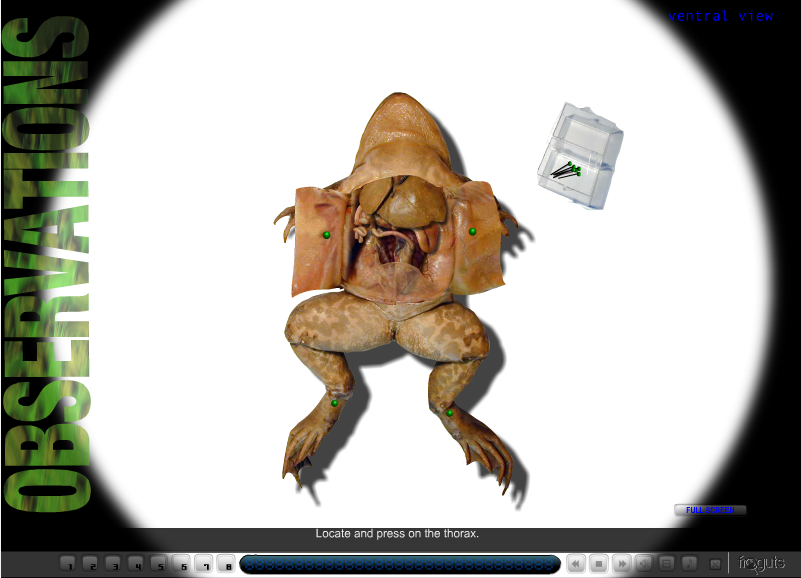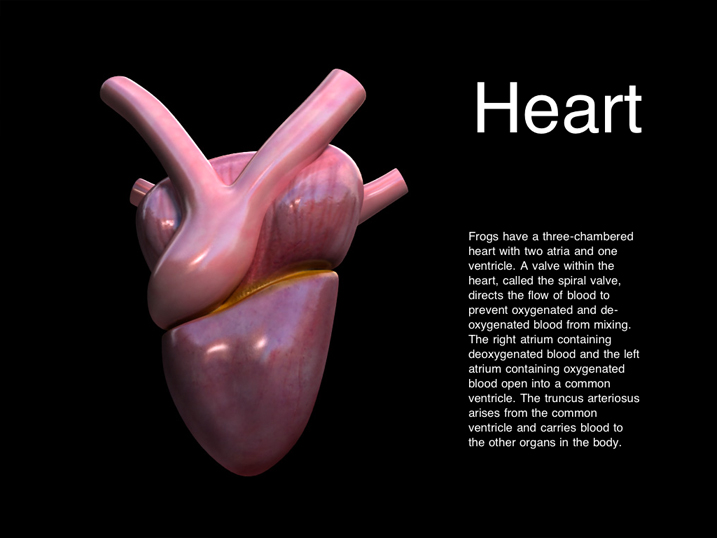

While there was a deep taboo in Greek culture concerning human dissection, there was at the time a strong push by the Ptolemaic government to build Alexandria into a hub of scientific study.
#Virtual frog dissection site full#
During this period, the first exploration into full human anatomy was performed rather than a base knowledge gained from 'problem-solution' delving. Human dissections were carried out by the Greek physicians Herophilus of Chalcedon and Erasistratus of Chios in the early part of the third century BC. Engraving made in Venice, 1565 Classical antiquity Galen (129–c.200 AD), Opera omnia, dissection of a pig. If pathological connections exist, such as a fibrous pericardium, then this may be deliberately dissected along with the organ. For example, when removing the heart, connects such as the superior vena cava and inferior vena cava are separated.

Dissection of individual organs involves accessing the area in which the organ is situated, and systematically removing the anatomical connections of that organ to its surroundings.

The Rokitansky method involves an in situ dissection of the organ block, and the technique of Ghon involves dissection of three separate blocks of organs - the thorax and cervical areas, gastrointestinal and abdominal organs, and urogenital organs. This technique allows a body to be sent to a funeral director without waiting for the sometimes time-consuming dissection of individual organs. An alternative more cumbersome technique involves the removal of the entire organ body, called the Letulle technique. Most dissection involves the careful isolation and removal of individual organs, called the Virchow technique. This preparation is sometimes called prosection. A "prepared" specimen may be preserved in solutions such as formalin and pre-dissected by an experienced anatomist, sometimes with the help of a diener. A "fresh" specimen may be dissected within some days, retaining the characteristics of a living specimen, for the purposes of training. When provided, they are evaluated for use as a "fresh" or "prepared" specimen. Specimens are dissected in morgues or anatomy labs. Prevention of transmission includes the wearing of protective gear, ensuring the environment is clean, dissection technique and pre-dissection tests to specimens for the presence of HIV and hepatitis viruses. Ī key principle in the dissection of human cadavers is the prevention of human disease to the dissector. ĭissection is used to help to determine the cause of death in autopsy (called necropsy in other animals) and is an intrinsic part of forensic medicine. In medical schools, students dissect human cadavers to learn anatomy. Dissection is practised by students in courses of biology, botany, zoology, and veterinary science, and sometimes in arts studies.
#Virtual frog dissection site mac#
Apple Quarantine has to be removed from the Mac version before it will run.Plant and animal bodies are dissected to analyze the structure and function of its components. The subject to be dissected is viewed in 3D and students have the ability to manipulate the subject prior to dissection.įroguts has been made available by The Science Bank for PCs and Macs running Flash Player. Each system is completely discussed and the correct order of dissection is ensured. Students use virtual dissection tools i.e. Froguts allows users to virtually dissect a bullfrog, a cow eye, a starfish, a foetal pig, and owl pellet, as well as being able to explore a Mendelian Pea experiment and observe fruit flies.Įvery dissection is detailed and offers quizzes after each section.

Froguts is a virtual dissection tool for school and home learners.


 0 kommentar(er)
0 kommentar(er)
